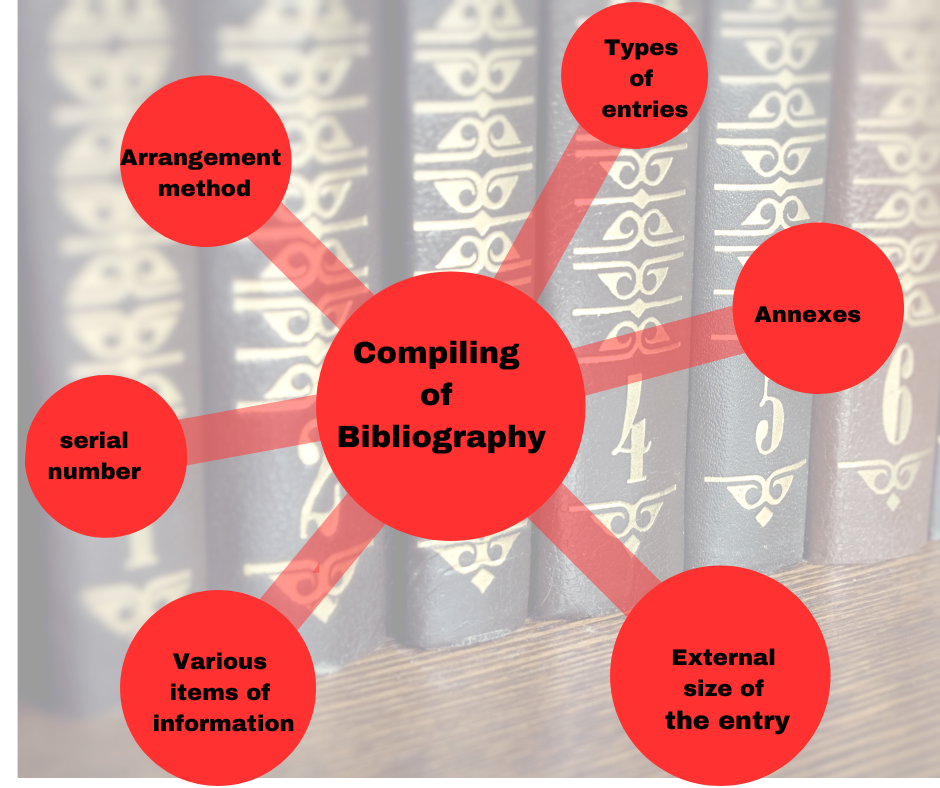The word bibliography comes from the Greek word “bibliographia”. ‘Biblion’ means book, and ‘Graphian’ means writing. So, from the etymology of the word, the word bibliography means writing books. Later, this word refers to writing about books. However, in today’s era, its practical aspect is more comprehensive and modern.
Steps to Compile an Effective Bibliography:
Creating bibliographies is a vital aspect of a reference librarian’s role, tailored to meet the specific needs of users. Regardless of the type of bibliography being compiled, there are essential preliminary steps that must be taken to ensure its success. Here’s an overview of these foundational steps:
1. Planning: The crux of bibliography creation lies in meticulous planning. Without a solid plan, achieving success is like sailing without a compass. When armed with a comprehensive plan, it feels as though half the journey is already mapped out. A bibliographer must first grasp the underlying techniques and essentials of bibliography creation, as well as the key topics at hand. Key elements of planning include:
- Defining the Topic: Clearly articulating what the bibliography will address.
- Establishing the scope: determining the boundaries and depth of the topic.
- Deciding on Information Inclusion: Identifying what information will accompany each entry.
- Categorization: Deciding how many types of entries will be recorded.
- Arrangement of Entries: Planning the order in which the entries will appear.
- External Formatting: Establishing the overall look and structure of the bibliography.
- Supplementary Information: Considering what additional data may enhance the bibliography.
- Final Presentation: Envisioning how the completed bibliography will be showcased to its users.
2. Defining the Subject: To effectively define the subject matter, one should consult reliable resources such as dictionaries, textbooks, or subject-specific encyclopedias. The aim is to craft a precise and informative title that encapsulates the essence of the subject, ensuring it resonates well with the intended audience.
3. Defining the Scope of the Subject: Determining the scope requires careful consideration to keep the focus tight, avoiding tangential topics. This not only aids in meeting the needs of the reader but also ensures that resources are sufficiently sufficient.
Key Considerations:
- Materials: Selecting appropriate sources is crucial, taking into account the depth and breadth of the subject. The bibliography should encompass a variety of resources, including books, periodicals, publications, articles, pamphlets, manuscripts, tapes, films, and microcards.
- Language: Recognizing that significant publications in scientific fields may emerge in multiple languages, including English, Russian, German, French, and Japanese, it is essential to incorporate materials from all these linguistic sources to support diverse researchers.
- Geographical Focus: The scope can also reflect geographical dimensions, delineating the subject area covered as well as the place where the material was published.
- Target Audience: Understanding the demographic of readers for whom the bibliography is prepared is critical to tailoring its content and depth accordingly.
4. Source Verification: A reliable bibliography hinges on the truthfulness and accuracy of its sources. It is imperative to validate the information, steering clear of dubious claims. A thorough list of credible sources should be established, categorized into:
A) Published Sources: Works that are formally published and readily accessible.
B) Unpublished Sources: manuscripts or materials that remain accessible only in limited or private forms.
By following these steps with diligence and creativity, a reference librarian can craft a bibliography that not only meets the informational needs of users but also stands as a testament to academic rigor and meticulousness.

Techniques for Compiling a Bibliography
1. Various items of information: The main entry must include the author, co-author, full title, edition, illustrations, bibliography, and place of publication, date of publication, publisher’s name, and volume number. In some cases, a summary or annotation is provided.
Here is an example of a bibliography entry following the given concept:
Smith, John, and Jane Doe. The Art of Research: A Comprehensive Guide. 2nd ed., illustrated, Oxford University Press, 2020. Includes bibliography.
If an annotation is required, you can add:
This book provides an in-depth exploration of research methodologies, citation techniques, and best practices for compiling bibliographies, making it an essential resource for students and scholars.
2. External size of the entry: Whatever the festival of the book description, it should be entered on a slip or card of 3″ x 5″ size. All the information should be recorded in it. Entry can also be made in a notebook, but it is very difficult. Therefore, a slip or card is more acceptable. One connection should be made on a card. This can be done in different formats. However, it is better to do it on a card of that size.
3. Other Annexes:
A bibliography may include the following annexes:
a) Preface describing the purpose, scope, limitations, history, etc. of the bibliography;
b) Table of Contents;
c) Arrangement;
d) Outline of the classifications used;
e) List of abbreviations;
f) How to use the bibliography;
g) Directory of publishers
4. Types of entries:
After writing all the cards, arrange them according to the author’s name to see if the same topic has been written twice. If so, keep the most necessary cards and arrange the remaining extra cards according to the author’s name. Arrange the sub-sections of the main topic in alphabetical order, and use the sequential name together, and if there is a duplicate, then delete the other one.
5. Arrangement method:
Bibliographical works can be arranged in the following ways:
- By category
- By subject
- By chronology
- By event list
- By author, etc.
6. Final work:
After deciding and confirming the method of arranging the cards from the collection, a serial number should be given to each collection, and this serial number is used while making the final index. Then, before typing the bibliography, the following points should be kept in mind.
A ) Whether there are any mistakes in the collected cards.
B ) It is desirable to have an index at the end of the preparation of the bibliography.
C ) Whether any card has been duplicated, etc.
This method makes it possible to save a bibliography step by step. Compiling a bibliography requires careful organization, proper citation formatting, and thorough research to ensure credibility. Key steps include identifying reliable sources, recording citation details, and using standardized citation styles. Mastering these techniques enhances the quality of academic or professional work and helps avoid plagiarism and maintain ethical research practices.



